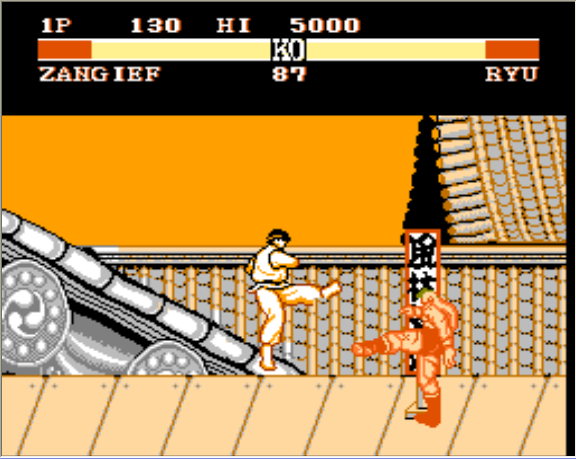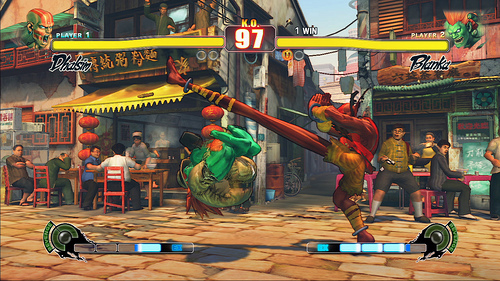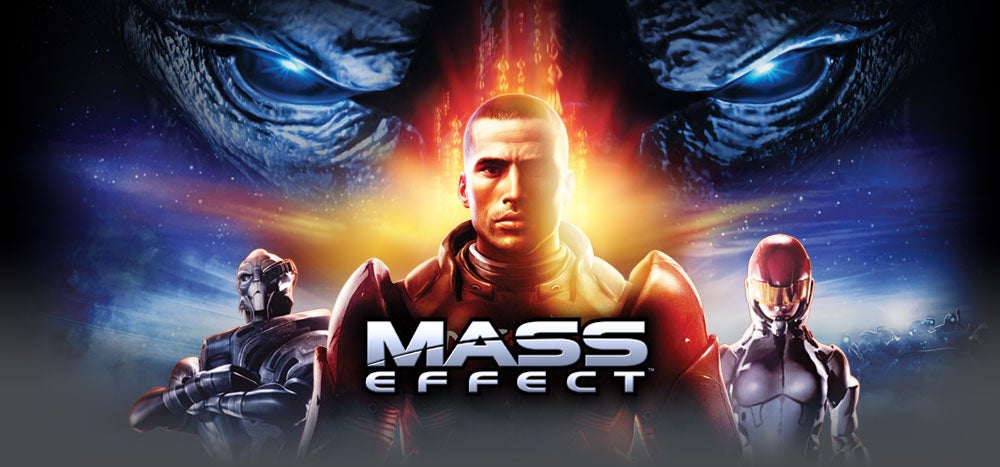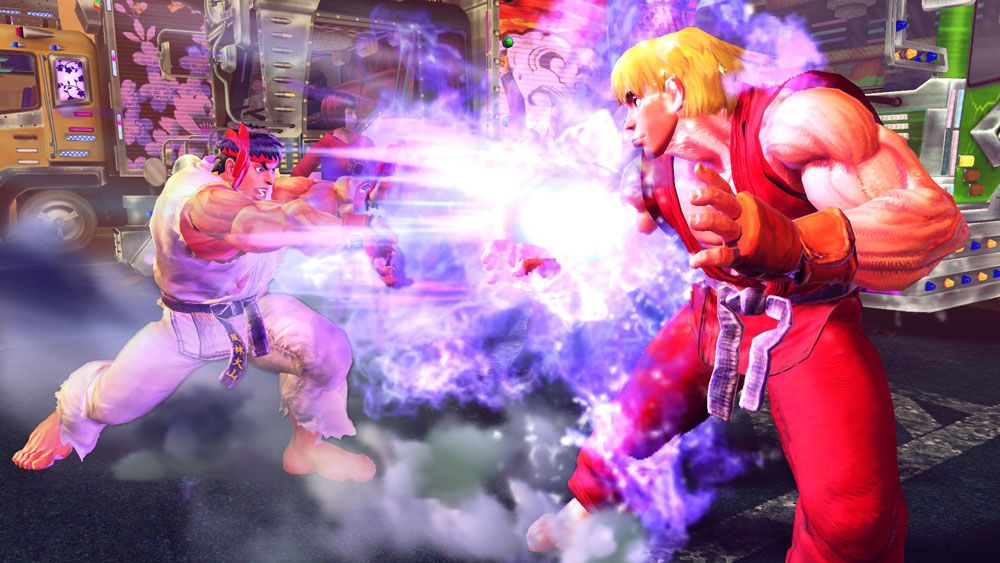Science Fact or Cinematic Fiction? The Violation of Conservation of Mass in Video Games
Let's talk about
conservation of mass. The principle behind conservation of mass and
energy is pretty simple, going back to the idea that something cannot
be created out of nothing. Ergo, any system of mass and energy cannot
be created nor destroyed—though mass and energy may transfer
between energy and mass states, but that's probably a lesson geared
more towards chemistry. Granted, it doesn't take a genius to figure
this principle out, as conservation of mass is one of the most basic
principles of the universe that can be observed just about all the
time. However, adhering to this principle in every single story
really does not help stretch the imagination in fantasy situations.
Often times, conservation of mass can act as a hindrance in video
games by limiting the possibilities of what can be done in such games, thus many games have opted to ignore this principle in the
name of entertainment, be it for story or gameplay purposes. So, without further ado, let's take a look at a few games that do what can't be done in the real world: completely ignore one of the most basic principles of physics in the universe.
Street Fighter VI
 |
| Wait, wrong Street Fighter game. Wow, I remember playing this on my bootleg NES. Time sure have changed since then... |
Ask any fighting
game enthusiast what the quintessential fighting game is, and most of
them will definitely point to the Street Fighter series. Capcom has
been developing this fabled fighting game franchise ever since the
first game debuted in the arcades back in 1987, and has been going
strong ever since with its current iteration of the series dubbed
“Ultra Street Fighter VI” (which is actually the...4th
version of Street Fighter 4, which makes it...the umpteenth version.
Seriously, there are way too many for me to count). The games feature
characters with very unique fighting styles that can be pit against
each other in one on one duels. Most of the fighting styles of these
characters are founded upon real forms of martial arts such as karate
and Muay Thai, but the game also featured more whimsical elements
such as fireball projectiles that are usually referred to as a
“Hadouken” attack for most characters (unless you play Sagat,
who's attacks are just..."thaiger"-everything). These shots can be
fired off without any limit so long as your character was still
alive, allowing for a play-style that involved testing your opponent
at a safe distance with fireballs.This is a pretty
clear violation of the conservation of mass principle as the fighters
that are capable of such seem to have limitless energy so long as
they were conscious.
This kind of sequence is what I like to call getting "Daigo'ed," as named after the famous Daigo Umehara. Don't know what I mean? Take a look at this video:
Seriously, this is one of the most annoying things that can happen to you in this game.
Among the stranger
characters in the roster lies Dhalsim, an Indian yogi whose “yoga”
fighting style involves spitting flames, teleportation, and
stretching out limbs in ways that clearly defy every principle
of anatomy and mass.
 |
| Don't mess with Dhalsim's reach, because he will mess you up. |
Street Fighter as a
series has generally been inclusive of a heavy use of the mystic due
to the heavy influence of Asian martial arts in the series, but aside
from that element, the main purpose of this game's refusal to follow
the simple principle of conservation of mass—as well as many other
rules of physics—is to allow for a large diversity of game-play
styles between different characters. From these limitless possibilities spawned characters of many different types, some with varying degrees of realism, all working towards making the fights different at a character-against-character basis. Because of this, Capcom has
definitely built up a roster of fighters in their latest iteration of
Street Fighter that is nothing short of a healthy diversity.
 |
| Look at all these cool cats. I play that ninja girl who's...somewhere in the top middle left of the screen. She's cool. Kind of. |
The Mass Effect Series

We looked at Street
Fighter VI (excuse me, Ultra Street Fighter VI) as a game which
ignores conservation of mass to promote variety in a competitive
game-play environment. What about a game that tries to explain its
lack of coherence to conservation of mass as a major lore point? For
this, we will look at the Mass Effect series. The Mass Effect series
is a set of space-shooter science fiction RPG in the vein of Star
Trek-like storytelling. The game-play features guns that fire an
unlimited amount of projectile bullets that, in the first game, do
not run out until the gun overheats and needs to cool down. Certain
characters also gain access to “biotic” powers,
psychic-controlled blasts that consist of energy beams and explosions
that often altered space, time, gravity, and mass. All of this is
coupled with the existence of space ships that are gargantuan in size
and implausible faster-than-light warping, elements that feel more
science-fantasy than science-fiction.
The pistols in Mass Effect 1 were pretty notorious for being able to shoot an almost unlimited number of shots
Examples of biotics in action around 2:40
Many of these elements would
normally seem baffling and could be written off as “space magic;”
however, the writers behind Mass Effect at Bioware were kind enough
to give this space magic a name and how it works. The premise of Mass
Effect is founded upon the discovery of a new element, deemed
“element zero,” which releases “dark energy” that can modify
existing masses when exposed to an electrical current. This offers an explanation for a lot of the more fantastical elements of the game, from the strange space magic that is biotic powers to the sheer violation of mass conservation that the guns commit in the first game. The
introduction of this element provides the entire lore and story point
behind the game and allows for the exploration of a rich,
intergalactic society that has been exposed to this kind of power.
 |
| ...I should go. |
Saints Row: The Third
 |
Now, Ultra Street
Fighter VI and Mass Effect are both games where the violation of
conservation of mass is thought out in a meaningful way, one for the
sake of diverse multiplayer gameplay and the other in the name of a
rich, science-fiction universe. However, there is no rule that states
that breaking that rule of mass conservation has to be serious
business! After all, cartoons violate physics for the sake of
violating physics all the time, so why can't video games?This next
game play sequence may be the most hilarious, asinine, stupid, beautiful example
of a video game going all the way to the extreme of breaking this
rule. I present to you, the second mission Saints Row: The Third,
appropriately titled Yes I'm Free, Free-falling:
Skip to around 5:00, and just watch the beautiful carnage. Oh, and just for reference, you will see the plane around the 7 minute mark.
There are so many
stupid things going on with this scene that it is hard to figure out
which one to start with. This particular mission of this GTA-like
starts off in a reasonably-sized private jet, in which the main
character and his or her sidekick Shaundi end up bailing out of by
opening the cargo hatch of the train. This in turn releases not only
a bunch of thugs into the sky that attempt gun the player down in the
free-fall, but also in turn releases a bunch of full-sized vans that
end up raining down in the sky, in which the player would go through
a high-octane action sequence of having to shoot through the falling
vehicles to get to the free-falling Shaundi. The only problem is, if
you reference the plane that the characters were initially in, you
would find that there was no way that plane could have fit nearly all
of those cars. In most cases, this
would entail a level of distaste that would border on the imbecilic,
but anyone who is familiar with the Saints Row series should know by
now the ridiculous, over-the-top nature of the Saints Row games,
considering that the starting level was just as over-the-top with a
reality-TV-demo-bank-heist-gone-wrong and the hallmark of the second
game that is the poop-flinging truck. Despite the seemingly-normal
setting of “normal” streets and cities, the Saints Row games
establish early on that the universe is ridiculous and wacky. There
are so many points in the game where physics is straight up denied;
why should this scene be any exception to that? Ultimately, nobody
really cares that multiple rules of physics aren't being followed, as
the game is just really stupid fun.
 |
| Beautiful. So beautiful. |
These are just some
of the countless examples of video games breaking the physical rule
of continuity that is conservation of mass and energy. Much of the
charm of these games have very much to do with their lack of
coherence to one of the most basic rules of physics, yet they are no
worse for doing so. It is important to remember that, in the midst of
a long movement that has been pushing for higher visual fidelity in
graphics and physics, many fun games are often founded upon the
premise of broken physics. Things like bunny hopping in Counter
Strike, the insane movement speed in Arena shooters, weird glitch
exploits that increase efficiency, and of course all of what was
mentioned in previous paragraphs prove the point that games are not
necessarily defined by the fidelity of the physics, but more so by
the intent of the developer. After all, in a video game, game play
comes first. Everything else—the art, the music, the physics,
etc—need to wrap around what the game play is meant to be.


